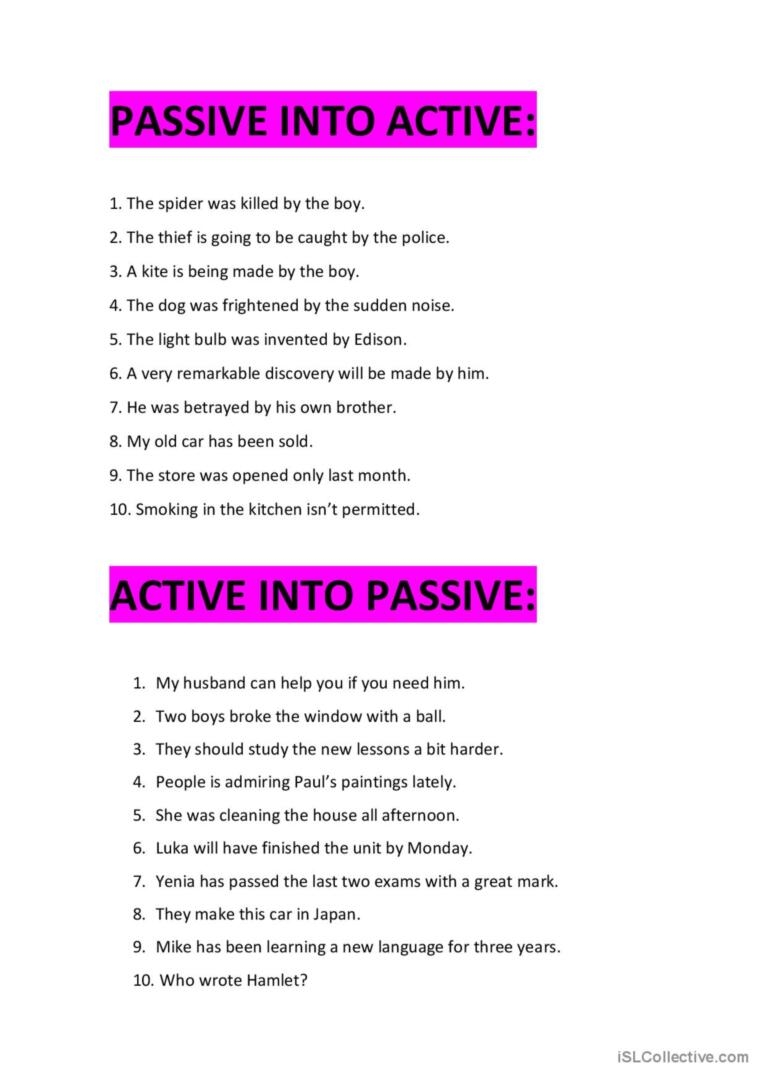Understanding the difference between active and passive voice is essential for effective communication. While active voice emphasizes the doer of the action, passive voice focuses on the receiver of the action. By practicing exercises that highlight these differences, you can improve your writing skills and clarity of expression.
Active voice is generally preferred in writing as it is more direct and engaging for the reader. It clearly identifies the subject performing the action, making the sentence easier to understand. On the other hand, passive voice can be useful in certain situations, such as when the doer of the action is unknown or when the focus is on the receiver of the action.
Active and Passive Voice Exercises
One exercise to practice active and passive voice is to rewrite sentences in both forms. For example, take the sentence “The dog chased the cat.” In active voice, it would be “The cat was chased by the dog” in passive voice. This exercise helps you to see how the focus shifts from the doer to the receiver of the action.
Another exercise is to identify whether a sentence is in active or passive voice. This can be done by looking for the subject performing the action. If the subject is doing the action, it is in active voice. If the subject is receiving the action, it is in passive voice. Practice identifying and converting sentences between the two voices to strengthen your understanding.
Additionally, try writing paragraphs using only active or passive voice to see how it impacts the tone and flow of your writing. Pay attention to how each voice affects the clarity and emphasis of the message you are trying to convey. This exercise can help you develop a better sense of when to use each voice effectively.
By regularly practicing active and passive voice exercises, you can become more proficient in choosing the appropriate voice for your writing. Whether you are aiming for clarity, precision, or a specific emphasis, understanding the nuances of active and passive voice will enhance your communication skills.
In conclusion, mastering active and passive voice exercises is essential for becoming a proficient writer. By practicing rewriting sentences, identifying voice in sentences, and experimenting with writing in different voices, you can improve your writing skills and effectively convey your message to readers.
